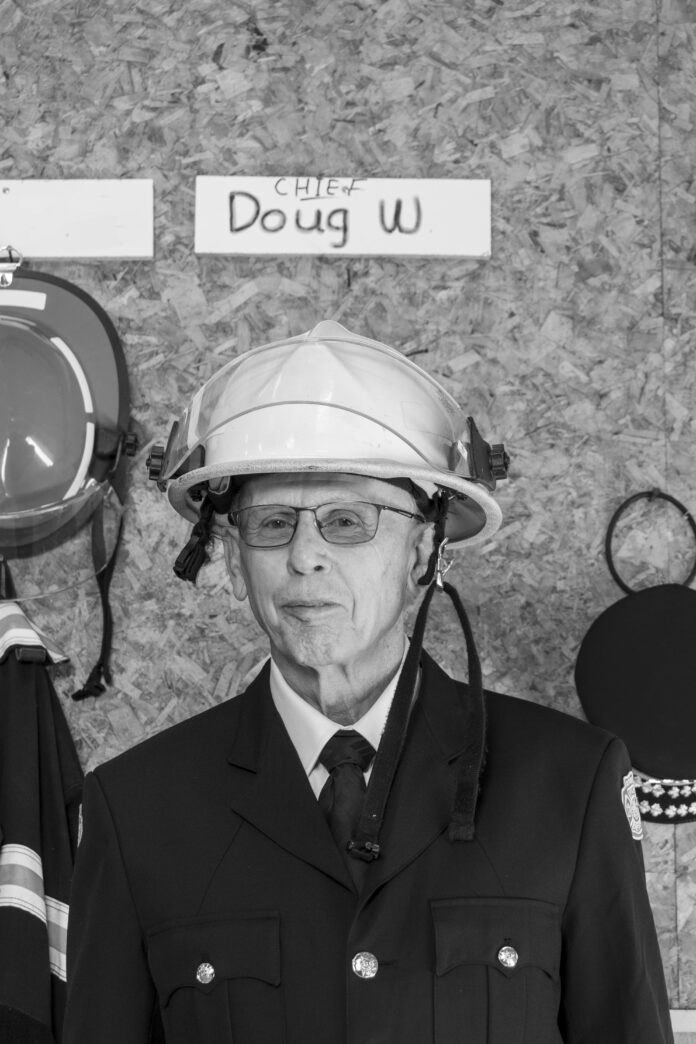TORONTO—For her role in ensuring current and future generations understand the history of powwow dances and invigorating First Nation dancing, Karen Pheasant-Neganigwane, who is originally from Wiikwemkoong Unceded Territory, was inducted in the Canadian Dance Hall of Fame by Dance Collection Danse (DCB) this past Sunday, November 5 at a ceremony held at the Palais Royale in Toronto.
“Karen has been a significant part of the movement to recover Indigenous dancing,” Amy Bowring, executive director and curatorial director of DCB (who also heads up the induction selection committee), told The Expositor. She pointed out the Indian Act banned Indigenous dancing from 1884-1951, with those performing Indigenous dances threatened with incarceration. “The dancing never actually stopped, but Indigenous people had to hide it.”
“When the ban was lifted Indigenous people worked to recover their traditional dances,” said Ms. Bowring. “Karen is a big part of that, being a big part of the powwow movement and jingle dance.”
“And she literally wrote the book, ‘Powwow: A Celebration through Song and Dance,’ which won the Norma Fleck Award for writing the Best Canadian Children’s Non-Fiction Book in 2021, to help educate everyone on indigenous powwow dance, why it is important historically and culturally, what happens at a powwow and the food found at a powwow,” said Ms. Bowring. “And in her teaching work she has helped to reclaim and invigorate Native dancing.”
Ms. Pheasant-Neganigwane, who now lives in Lethbridge, Alberta said upon receiving the induction award this past Sunday, “I have been a dancer since I was a child, more active as a young woman, as a mother raising my children as dancers, both the sacred and the secular. The Canadian Dance Hall of Fame has recognized the contributions of dancers in ballet, jazz, modern and now in Indigenous Dance-Powwow.”
“Over the years, Indigenous dancers have performed and choreographed extraordinary works of contemporary dance expressions. Included are prior inductees, such as Rene Highway, my first contemporary mentor, Michael Greyeyes, my son’s dance trainer/mentor, and Alejandro Ronceira, who mentored me for years while teaching at the Banff Centre for the Arts,” said Ms. Pheasant-Neganigwane. “It is a true honour to have our dance form recognized at the National dance level.”
Ms. Pheasant-Neganigwane explained, “In 1954, my mother had her first big city dance floor experience at the Palais Royale, where we are gathered for this historical event in recognition of the Canadian Dance Hall of Fame inductions. A couple of years later my mother met my father, again on the dance floor, that time in Wikwemikong.”
“For many societies, dance was a standard practice,” said Ms. Pheasant-Neganigwane. “According to the International Encyclopedia of Dance, dances were performed, “for magical purposes, rites of passage, to induce states of ecstasy or trance, mime, as homage. Dances were performed by individuals but mostly by groups at both sacred and secular occasions. This was from ancient Roman times, through each period of history to colonial times, except for Indigenous peoples.”
“Federal policy/legislation considered Indigenous dance an act of crime and charged anyone involved with dance with being guilty ‘of a misdemeanor, and liable to imprisonment for a term of not more than six nor less than two months in any jail or other place of confinement; and every Indian or persons who encourages an Indian to set up such a festival shall be liable to the same punishment.’ “Although the primary issue was of ceremonial dance, which is the foundation of other societies and their dances, such as the Ancient Romans and Greeks, why was it a crime for Indigenous peoples to dance at ‘Both sacred and secular occasions.’”
“Dance did not end for Indigenous peoples, it merely went into secret societies,” explained Ms. Pheasant-Neganigwane. “My own father shared how his mother went far away into the bushes to keep their ceremonial practices, as I have shared in my book.”
She continued, “In 1951, the Indian Act was revised, families and communities were shamed for their upholding ceremonial ways. That was 72 years ago. I am not quite that age, but I am of the first generation since our people have brought back dance into lives, both the sacred and secular.”
Ms. Pheasant-Neganigwane acknowledged, “Miigwech to the singers, dancers of the Lake of the Woods region who brought me the teachings of the Shiibaashka’igan (jingle dress) dance, particularly the late Alex Skead and wife, Elizabeth, late Joe Morrison and wife, Mary Alice Smith, the Copenace’s of the LOW drum. To the theatre groups who brought Indigenous dance to their studies, Centre for Indigenous Theatre, Native Earth and to Debajehmujig Theatre company who produced my first dance story over 20 years ago. Also, to Marie Mumford, Alejandro Ronciera from the Banff Centre, Aboriginal Arts program. Miigwech for believing in me. Lastly, to my parents, Rosemary Lavallee (Mishibinijima), and Moses bah Lavallee (Wassegijig) for listening to their little girl plead to be taken to the dance floor.”
Ms. Pheasant-Neganigwane is currently an assistant professor at Mount Royal University in Calgary and teaches in the Department of General Education as well as Indigenous studies with the Department of Humanities.
Ms. Pheasant-Neganigwane was one of six inductees in the hall of fame this year.





